Axolotls
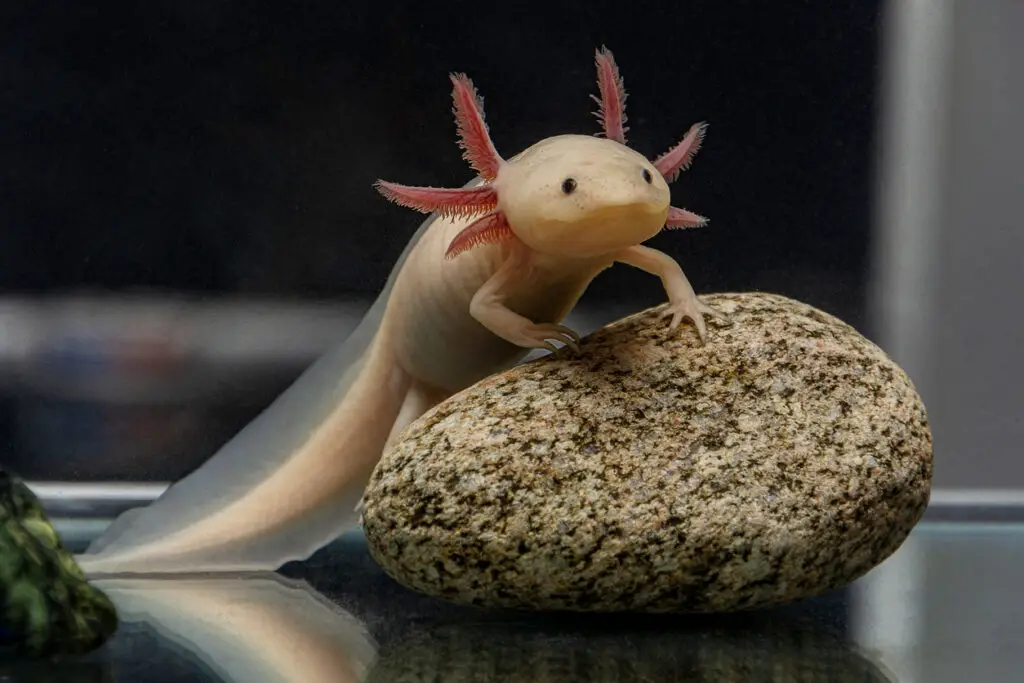
If aliens ever dropped off a pet on Earth and forgot to pick it up, it might be the axolotl. These aquatic salamanders have permanent baby faces and a constant little grin that’s both creepy and oddly adorable. Unlike most amphibians, axolotls never complete metamorphosis—they stay in their larval form forever, keeping their gills, fins, and wide-eyed expression. Scientists call this trait neoteny, but honestly, it just feels like nature hit pause halfway through evolution.
What makes them even weirder is their insane ability to regenerate. Lose a leg? No problem—it’ll grow back. Lose a chunk of your heart? That’ll regrow too. Axolotls can regenerate entire limbs, parts of their spine, and even sections of their brain. They’re like the salamander version of Wolverine. And while they’ve gained cult status as exotic pets, they’re critically endangered in the wild. So yes, you can have one in your tank—but the ones left in their native lakes near Mexico City are vanishing fast. Still, there’s something surreal about watching a creature that looks like a Pokémon and heals like a sci-fi superhero paddle around your living room. Alien pet? Close enough.
Leafy Sea Dragons

At first glance, you might think a leafy sea dragon is just seaweed caught in a current. But then it moves. Slowly, majestically, like a living sculpture gliding through the ocean. With a body that looks like it’s been crafted from driftwood and lettuce, this marine marvel from southern Australia defies every expectation of what an animal should be. It’s part of the seahorse family, but calling it a “seahorse” is like calling a dragon a “lizard.”
Leafy sea dragons don’t have scales—they’re covered in bony plates and decorative fronds that act as camouflage. No two look alike, and their slow, hypnotic swimming makes them seem like mystical beings out of a fantasy novel. They don’t have teeth or stomachs, either—just long, straw-like snouts that suck up tiny shrimp like alien vacuum cleaners. Despite their otherworldly vibe, they’re painfully fragile. Even slight disturbances in water conditions can stress them out. So if you’re thinking about getting one as a pet, don’t. These creatures are better admired in the wild or highly specialized aquariums. They’re proof that the ocean doesn’t just hide monsters—it hides miracles.
Dumbo Octopuses
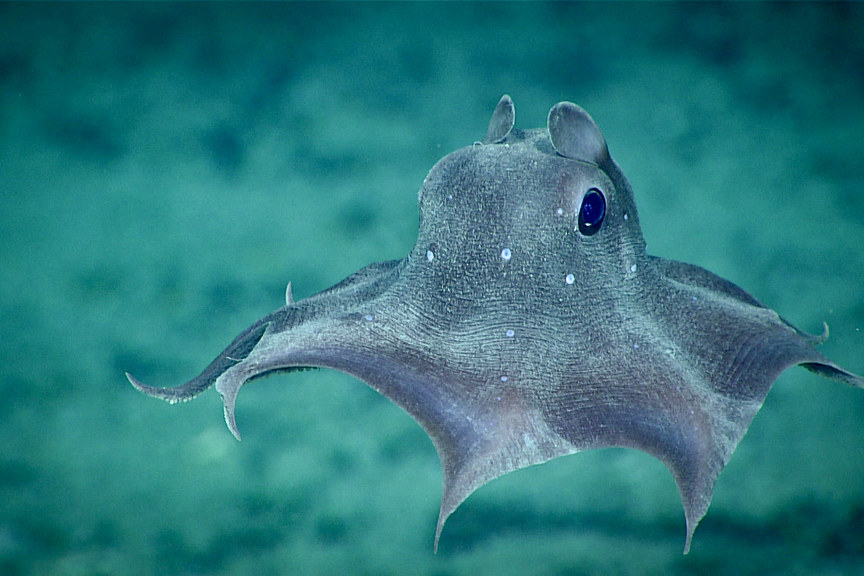
When you descend into the deep sea, where light doesn’t reach and pressure could crush a car, you expect terrifying creatures. What you don’t expect is something that looks like a Pixar character. Meet the Dumbo octopus—named for its big, flappy ear-like fins that look like they belong on a baby elephant. These little weirdos live at depths of up to 13,000 feet, and they swim using a kind of underwater ballet powered by their “ears.”
They don’t ink, they don’t squirt jets—they just drift, gently pulsing their gelatinous bodies like space jellyfish. And they’re ridiculously cute. Scientists have described them as looking “delighted” and “charmed” during observations. It’s the kind of face that makes you want to protect it at all costs. But don’t let the softness fool you—Dumbos are predators, hoovering up worms and crustaceans from the ocean floor. Their entire vibe screams alien, from their squishy transparency to their ghostly hover. They’re also completely boneless, which makes them both incredibly flexible and extremely odd. In a world where most deep-sea creatures look like nightmares, the Dumbo octopus is a floating dream.
Glass Frogs

Glass frogs don’t hide what’s going on inside. Literally. Their translucent skin lets you see their internal organs, including their beating hearts, like nature’s version of a biology textbook. Native to Central and South America, these tiny frogs are barely the size of a coin—and about ten times as strange. From above, they look like ordinary green frogs. But turn them over, and it’s pure sci-fi.
Why are they see-through? Scientists think it’s a type of camouflage, helping them blend in with leaves and dappled sunlight in the rainforest. But let’s be real—it also makes them one of the most bizarre-looking creatures on Earth. Imagine walking around with your guts on display like it’s no big deal. And somehow, they make it work. Some species even have reflective cells in their muscles to enhance the transparency effect. If aliens were to design a frog, they’d probably give it glass skin too. It’s both unsettling and beautiful in the weirdest way. The kind of creature that makes you pause and say, “Is this even real?”
Star-Nosed Moles
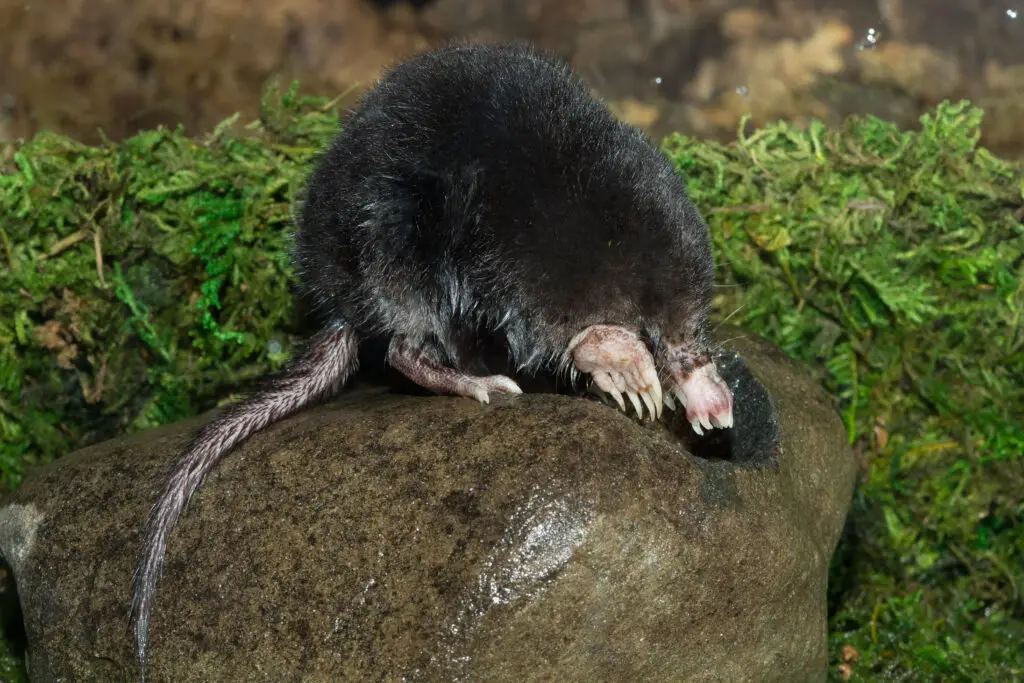
One look at the star-nosed mole and you’ll wonder if you’re staring at a glitch in evolution. Its snout looks less like a nose and more like a sea anemone crash-landed on its face. But that bizarre fleshy star is actually one of the most advanced sensory organs in the animal kingdom. Each of its 22 finger-like tentacles is packed with over 25,000 microscopic sensors called Eimer’s organs. Translation: this mole “sees” the world through touch, and it does it faster than any other animal.
It can identify and gobble up prey in under 0.2 seconds. That’s faster than you can blink. Despite looking like a horror movie prop, the star-nosed mole is a neurological marvel. It lives underground in damp, dark places where sight isn’t useful, so evolution handed it a nose that’s more like a biological radar. But here’s the kicker—it’s not blind. It just prefers a completely different way of sensing the world. It’s the kind of creature that makes scientists nerd out and regular people recoil. Still, it challenges how we define beauty, usefulness, and what a “normal” animal should look like. Honestly, if an alien probe turned into a mammal, this would be it.
Saiga Antelope

The saiga antelope looks like it wandered out of a Star Wars cantina. With a nose that droops like a fleshy vacuum nozzle, it seems too bizarre to be real—like a child’s drawing of a cow mixed with an alien elephant. This peculiar creature roams the grassy steppes of Central Asia, where its odd nose does more than raise eyebrows. It helps filter out dust in the arid summers and warms the icy air in brutal winters. Function, in this case, seriously beats form.
The saiga’s face may be cartoonish, but its life story is anything but funny. In 2015, more than 200,000 saigas died in just a few days from a mysterious bacterial outbreak that wiped out a massive portion of their population. Poaching and habitat loss haven’t helped either. Despite their alien looks, they play a vital role in their ecosystems—keeping grasslands healthy and balanced. Watching them trot around with that bounce in their awkward gait, you can’t help but smile—and then feel a pang of worry. If Earth’s strangest herbivore disappears, what does that say about our ability to protect the truly unique? There’s something deeply tragic about the idea that we could lose a creature that looks like it belongs on another planet before we fully understand it. Saigas remind us that Earth’s weirdest wonders are often the most fragile. And sometimes, the real aliens among us are just trying to survive.
Mantis Shrimp
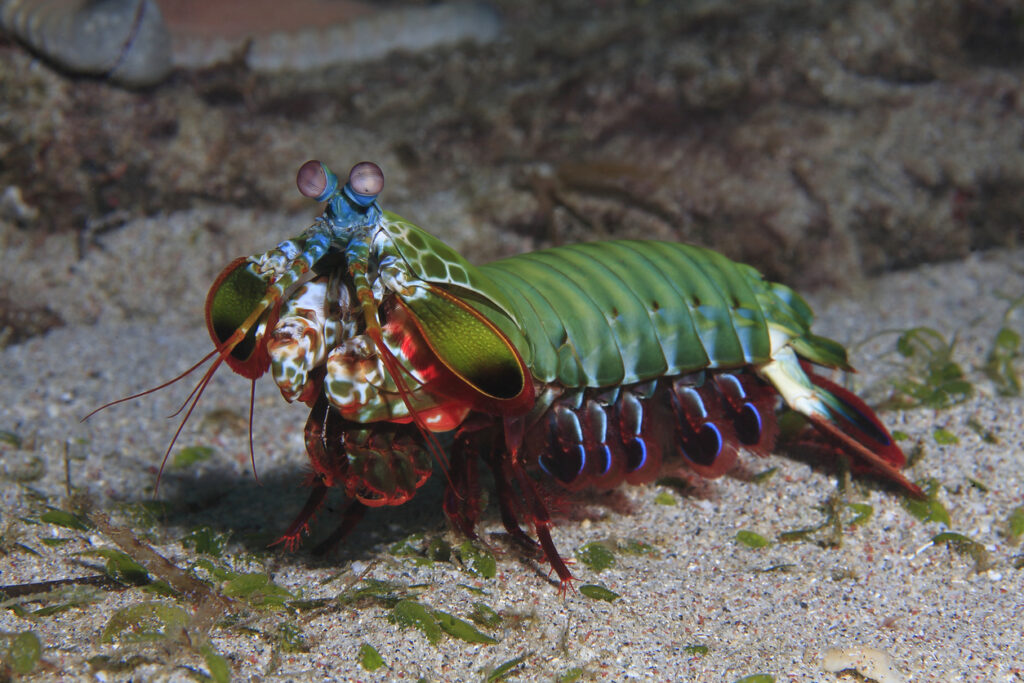
Mantis shrimp are proof that size doesn’t equal boring. These fist-sized marine crustaceans are as dazzling as they are dangerous. Their colors shimmer like a living rainbow, but don’t let the beauty fool you. They can strike with the force of a bullet, smashing shells, glass, and even fingers with terrifying speed. Their claws spring forward so fast they cause cavitation bubbles that collapse in a flash of light and heat. In essence, they punch so hard they boil water around them.
That’s just the beginning. Their eyes are among the most complex in the animal kingdom, capable of detecting polarized light and seeing colors far beyond our spectrum. Scientists still don’t fully understand how they process visual information—some believe they don’t even “see” in the way we do. It’s like they’ve evolved on a different visual plane. Mantis shrimp live in burrows, ambushing prey like tiny underwater assassins. They’re aggressive, territorial, and surprisingly intelligent. Watching them hunt feels like witnessing something from an alien combat simulation. They challenge our ideas of what’s possible in biology. If a creature this small can hit harder than Mike Tyson and see colors we can’t imagine, what other limits is nature quietly breaking?
Naked Mole Rats
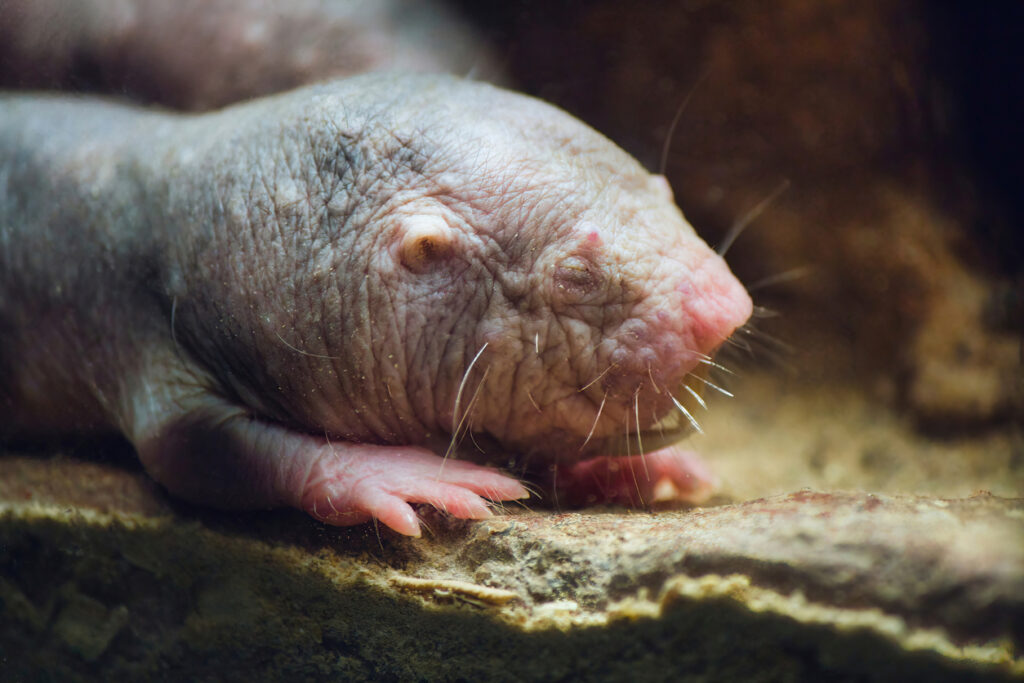
Naked mole rats are the underdogs of the animal kingdom—literally and figuratively. With their wrinkled, pink skin and oversized teeth, they’re not winning beauty pageants anytime soon. But dig beneath the surface (pun intended), and you’ll find a creature so bizarre, it seems custom-built to confuse scientists. For starters, they’re cold-blooded mammals—something practically unheard of. They also have an incredible resistance to cancer and can survive extremely low oxygen environments. These traits alone would make them fascinating, but there’s more.
Naked mole rats live in eusocial colonies like ants and bees. One queen, a few breeders, and everyone else plays their role without complaint. They communicate using complex vocalizations and can even recognize dialects within colonies. Their pain sensors barely react to acid or capsaicin—the stuff that makes chili peppers hot. Some researchers believe their ability to survive low-oxygen conditions could hold the key to treating strokes in humans. If there’s a creature on Earth that feels like it was genetically engineered by some alien biologist, this is it. They are creepy, brilliant, and resilient beyond belief. You may never want one as a pet, but the more you learn, the harder they are to ignore.
Tardigrades

Tardigrades—aka water bears—are the ultimate survivalists. Under a microscope, they look like plump, eight-legged gummy bears with claws. But don’t let the cuteness fool you. These things can survive the vacuum of space, boiling temperatures, crushing pressure, and radiation levels that would kill anything else. They do this by entering a cryptobiotic state where they dry out and effectively suspend all biological functions. No heartbeat. No brain activity. Just pure survival on pause.
Scientists once sent them into orbit aboard a satellite, exposed them to space, and brought them back—still alive. It was like a cosmic dare, and the tardigrades won. They’ve even been accidentally dropped on the moon during a spacecraft crash and might still be up there, just chilling in lunar dirt waiting for a drop of water. Their DNA repair mechanisms are so advanced that researchers have begun studying them for clues to human cell resilience. Are they Earthlings with incredible genes, or visitors from elsewhere who crash-landed here eons ago? The truth is unclear. But they’re a living reminder that the line between earthly and extraterrestrial is blurrier than we think.
Aye-Aye
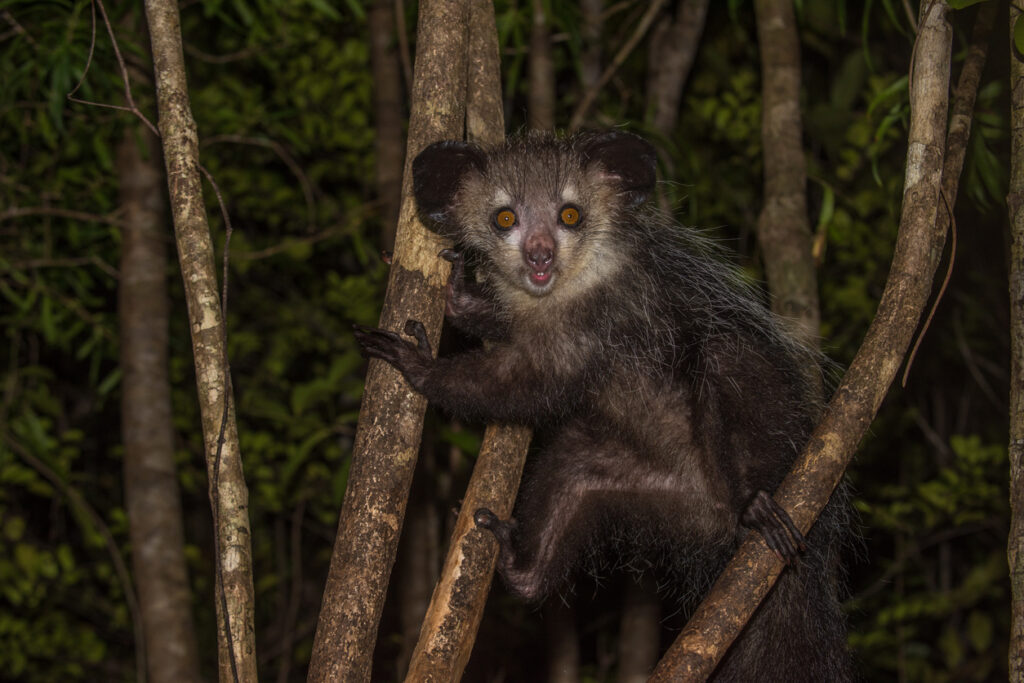
The aye-aye may be the most unsettling primate you’ll ever meet. Its skeletal middle finger is longer than all the others and thin enough to make your skin crawl. It uses it to tap on trees like a twisted Morse code until it hears an insect crawling inside—then it digs in and pulls the bug out like a creepy chopstick. Its eyes are huge, glowing orbs that never seem to blink. Combine that with bat-like ears and a hunched posture, and you’ve got the stuff of nightmares.
Locals in Madagascar have long feared the aye-aye, sometimes killing it on sight, believing it brings death. That’s led to serious declines in its already small population. But despite the eerie aesthetics, the aye-aye is a gentle and shy animal that just wants to snack in peace. It’s one of the few animals that uses percussive foraging, making it an evolutionary outlier. Every part of its body—from its teeth to its ears to that cursed finger—has adapted for one purpose: finding bugs. But its weirdness makes it hard for people to appreciate. Maybe that’s the real tragedy. We judge so much by looks that we forget the weirdos often have the most fascinating stories.
Goblin Shark

The goblin shark looks like a prehistoric prank gone wrong. It has a long, flattened snout and a jaw that can extend like a mechanical claw. When it attacks, its mouth shoots forward to snatch prey like something out of a sci-fi horror flick. It lives in deep, dark waters where the sun never shines, which makes it seem even more like an aquatic alien left behind by a passing UFO.
Its pale, almost translucent skin only adds to the undead aesthetic. Goblin sharks are so rarely seen alive that most photos we have are of dead or dying specimens—adding to their myth-like status. When marine biologists finally caught one alive on camera, people didn’t believe it was real. That jaw mechanism, technically called “slingshot feeding,” is one of the fastest and most bizarre in the animal world. Its slow, almost lazy swimming contrasts wildly with its ambush-style mouth attack. It’s like nature gave it one amazing party trick and said, “That’s enough.” There’s a deep, primal fear in watching it feed—and it has nothing to do with size. It’s the kind of weird that sticks in your mind long after you’ve closed the video tab.
Platypus
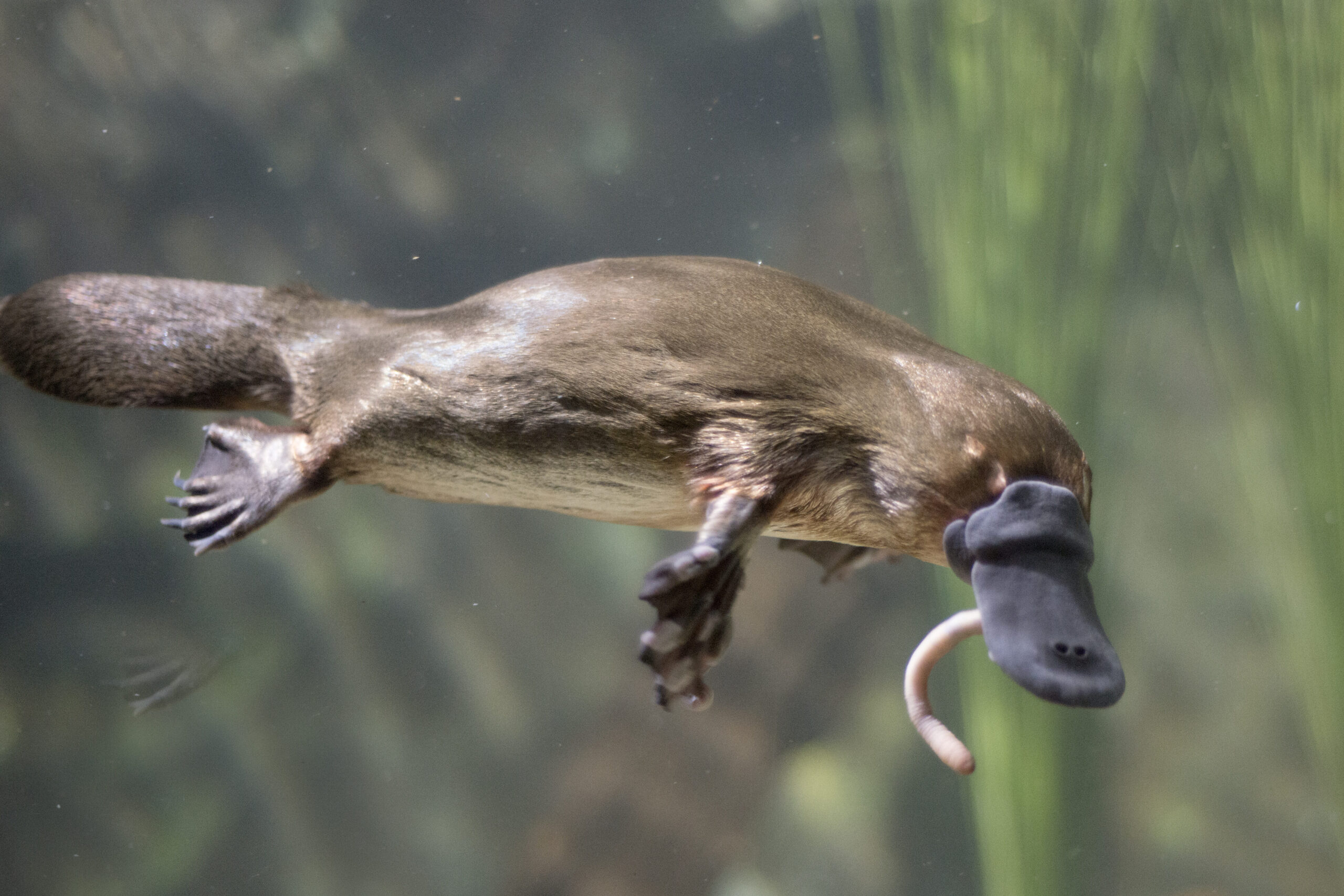
When the platypus was first discovered, European scientists accused Australian explorers of gluing animals together as a prank. Can you blame them? This egg-laying, beaver-tailed, duck-billed mammal made no sense. And it still doesn’t. It sweats milk, has no nipples, and the males can deliver venom with ankle spurs. It’s like a starter pack for every evolutionary oddball trait you can think of. Oh, and under UV light? It glows blue-green. Because of course it does.
Despite being so strange, the platypus is perfectly adapted to its life in Australian rivers. It hunts with its bill using electroreception—detecting the faint electric fields given off by the movements of prey. No other mammal does that. Its fur is water-resistant and warmer than wool, and its webbed feet act like paddles for silent underwater maneuvers. It’s not just a freak—it’s an efficient one. Every strange trait it has serves a purpose. That’s what makes it even more fascinating. The platypus feels like nature’s way of saying, “You don’t have me figured out yet.” And honestly, it’s right.


